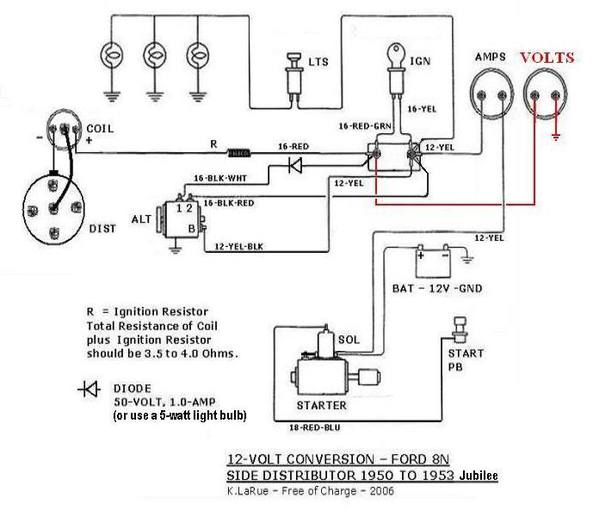I've got an issue with a 8n sidemount I just got back together. Put a new remanufactured alternator on it and noticed it was putting out just under 16 volts. Took that off , went to Autozone and had it tested, it failed and was given a different one. I installed it and started the tractor, had the same results. I understand I could have gotten another bad one but, we tested this one before leaving the store and it tested good. The alternators are Delco 7127's and are wired like many I have done before, #2 terminal jumped to B post, 12 gauge wire running form B post to terminal block on dash, #1 spade terminal running to coil side of terminal block with a diode installed inline. I'm using all new wire and have a volt meter installed instead of amp meter. I made sure the in dash volt meter was correct by using my Fluke meter while running and it showed the same, just under 16 volts. I also checked the voltage at the #2 and B post terminal while not running and had the correct battery voltage. For giggles I removed the #2 jumper wire and started the tractor, tester showed 14.3 volts at the battery while running??? Could this be a one wire alternator? They tested them at the store with 3 wire connectors and I have used this type before as 3 wires with no issues. I'll be the first to admit I'm electrically challenged but this seems like it may be something simple I'm just overlooking. Any help would be appreciated.
Dan


